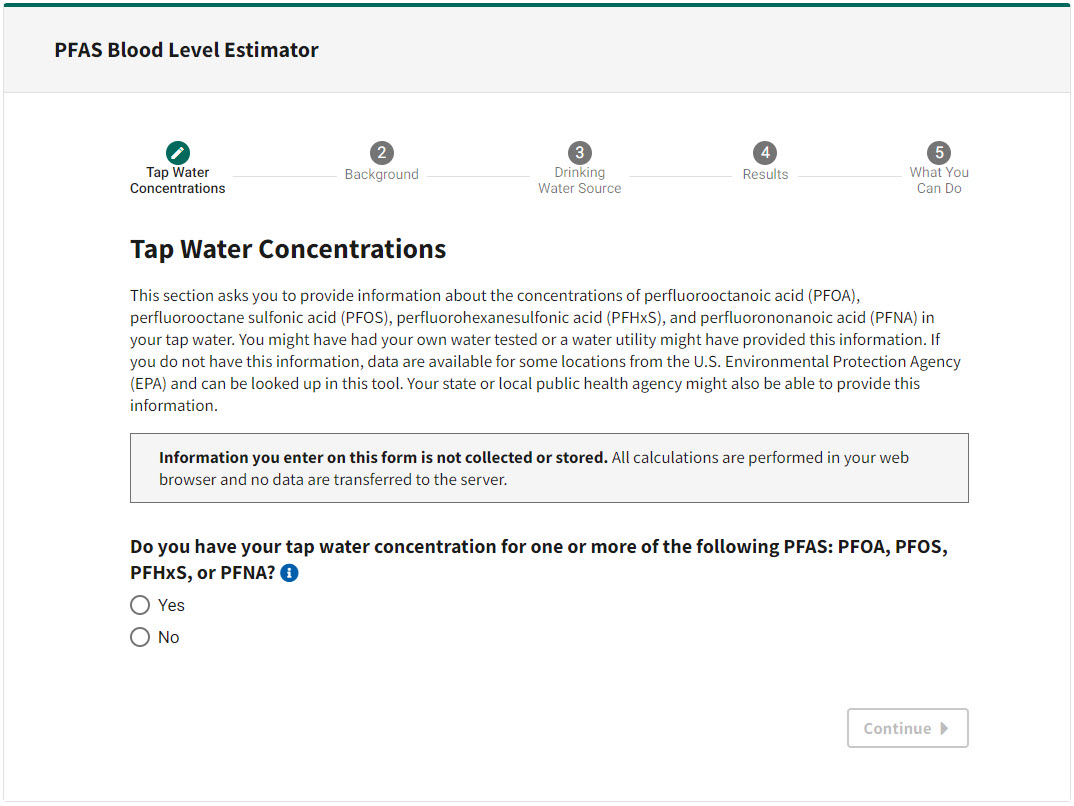Estimating Levels of PFAS in Your Blood
The Centers for Disease Control and Prevention (CDC) and the Agency for Toxic Substances and Disease Registry (ATSDR) developed the per- and polyfluoroalkyl substances (PFAS) Blood Level Estimation Tool for community members with exposure to PFAS through drinking water who would like more information about levels of perfluorooctanoic acid (PFOA), perfluorooctane sulfonic acid (PFOS), perfluorohexanesulfonic acid (PFHxS), and perfluorononanoic acid (PFNA) in their blood. Because blood tests for PFAS are not widely available, the estimates from this tool might be helpful when considering ways you might be exposed to PFAS and options for reducing your exposure, or when speaking with your healthcare provider. This tool is not intended to replace actual PFAS blood testing.
This tool is a web-based estimator for public use that provides personalized estimates of PFAS concentrations in blood based on exposure to one or more PFAS in drinking water. The tool also provides comparisons to National Health and Nutrition Examination Survey (NHANES) data. It was created to allow community members to obtain an estimate of their PFAS blood levels without having to undergo biological sampling.
For questions about the PFAS Blood Level Estimation Tool, please email PFAS@cdc.gov.
It is important for users to understand the limitations of this tool. This tool is not designed to determine connections between PFAS exposure and health effects. Also, please be aware that the tool provides an estimate using PFAS drinking water data entered by the user and is based on assumptions about how much a person might have been exposed over time. For these reasons the estimate from this tool does not provide the same level of certainty that an actual blood test would. Finally, blood levels alone – whether measured or estimated – do not tell you if your PFAS exposures will make you sick now or later in life.
To use this tool you must have information on the concentrations of one or more PFAS in your drinking water. This information might be available from water quality tests or, for some locations, from government data sets.
